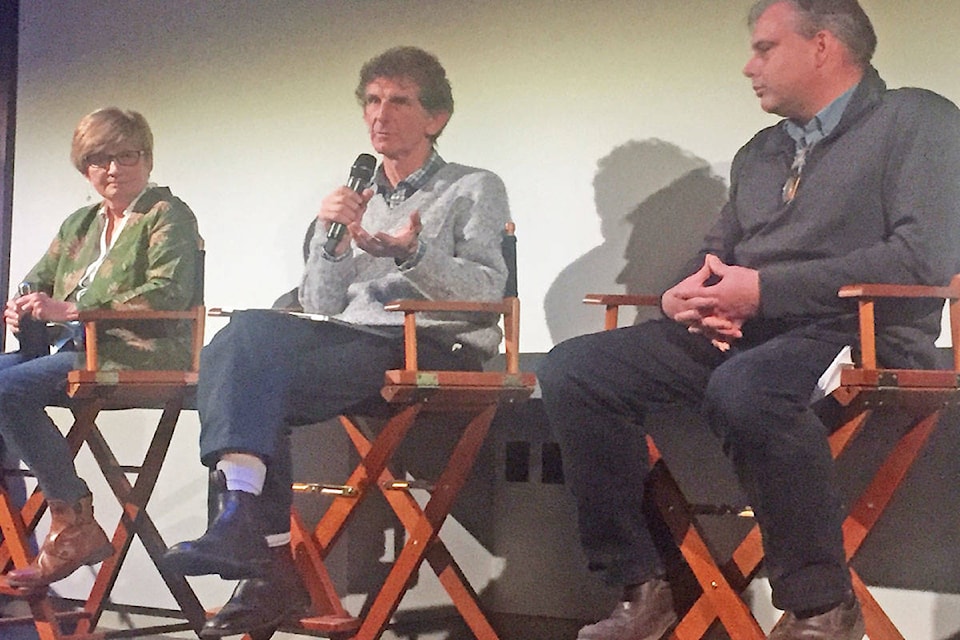Collaborating with Indigenous people’s historical knowledge of managing the land is a key step forward in addressing the extreme wildfire and flooding prevalent in the Okanagan over the past two years, according to a B.C. environment official.
Ray Crampton, district manager for the Okanagan Shuswap Natural Resource District, says one of the key findings of the Abbott-Chapman report on the 2017 wildfire season—Addressing the New Normal: 21st Century Disaster Management in B.C.— was to reinforce the need for greater integration of First Nations environment management practices with the current fire and flood prevention, planning and preparedness, response and recovery pillars.
“The message now is about collaboration and integration. This is not government 1.0 where we are here to listen but we’ll make all the decisions. Now it’s government 3.0 where there is recognition it takes us all to arrive at these decisions on all four pillars of disaster management,” Crampton said.
Crompton’s comments were part of a community water forum on floods and fires in the Okanagan that saw several science experts discuss issues concerning the impact of climate change and landscape management.
The event was co-hosted by the Okanagan Basin Water Board and UBC Okanagan’s Office of the Vice-Principal Research.
Facing the Okanagan’s flooding issues
Richard Armstrong, an Okanagan Nation Alliance traditional knowledge keeper, talked about the need for prescribed burning in early spring and late fall to mitigate forest fires, something First Nations people practiced for centuries prior to the arrival of European immigrants to North America.
He also said a propensity for growing communities to build on historic floodplains and try to manipulate and redirect the flow of water, as was the case with Mission Creek in Kelowna, has exposed those communities to flooding problems while destroying an ecosystem that served as Mother Nature’s flood control mechanism.
“We always knew among our people never to build below the high water mark and not interfere with the purpose of floodplains,” he said. “Diking up and narrowing our waterways, and building on those floodplains left the water with nowhere to go.”
B.C. declares state of emergency as 560 wildfires burn out of control
Armstrong said fire prevention techniques such as controlled burning are within the control of local authorities on all levels to invoke.
“We can’t do anything about climate change but we can do something about water management and fire prevention,” he said.
Crompton noted prescribed burning would raise concerns about exposure to smoke in the valley.
“It’s becomes a question of whether you want thick and crunchy smoke all summer or thin and crispy in the spring and fall,” he said.
Cailyn Glaser, biologist for Okanagan Nation Alliance, reinforced Armstrong’s point that fire is a tool for sustaining the biodiversity of a landscape, to help eliminate potential forest fire fuels, generate new vegetation and create new accessible areas for wildlife.
Active fire suppression has led to extreme fuel loading and vegetation in-growth throughout Syilx/Okanagan Territory, Glaser said.
Combined with climate change, she contends fire suppression has led to longer, more intense and more destructive wildfire seasons and a less resilient forest and grassland ecosystem. A less resilient ecosystem degrades cultural and social values, increases threats to communities and infrastructure and provides fewer natural resources.
“Climate change is a cumulative thing but it is occurring at the same time these other issues are also coming to a head,” she said.
“We have moved to a fire suppression philosophy for our landscape and the solution is to re-establish these long-time practices from our history for fire and flooding management.”
David Scott, associate professor at UBC Okanagan, said wildfires have led to a breakdown in the landscape soil makeup, which has fostered more severe flooding issues experienced in the last two years.
He said the heat generated by the fires has burned up natural ground debris which serves as a protective blanket for the soil, combusted the organic material in soil turning it powdery which leads to erosion, and increased its water repellency capabilities to not absorb runoff.
“The long-term solution is for us to do a better job of managing the fuels in our forests, and to use fire as a tool for achieving that,” Scott said.
Speaking to climate change, retired agriculture research scientist Denise Neilsen said wet winters and hot, dry summers should not be called the new normal.
“A new normal suggests stability going forward but the reality is we are looking at increased instability,” Neilsen said.
She cited the solutions to climate change are short-term to think about extreme weather preventative measures, mid-term for communities to rethink the merits of building on natural floodplains and near urban interface areas, and long-term to reduce greenhouse gas emissions otherwise “we will be in serious trouble.”
barry.gerding@blackpress.ca
Like us on Facebook and follow us on Twitter
